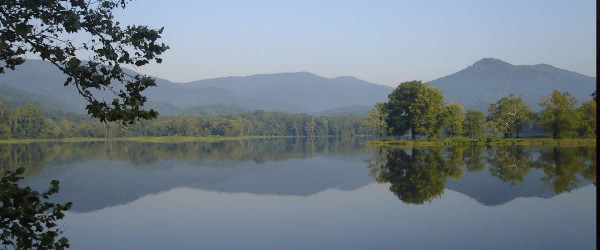
The efforts and choices made regarding our property impact the quality of our water—everyone’s water. If you think that negatively affecting the waterways is no concern to you if your property does not have a stream, creek or pond, realize that the runoff from your property does join your nearest stream, creek or pond and become part of your watershed via the storm drainage system. It is worth noting and telling others that storm drains empty directly into our streams and rivers.
A great visual for the watershed in your neighborhood can be found at arcgis.com.
Most of the population in the U.S. lives in urban or developed areas. These areas have been completely changed from their original landscape to fill a human need, including shelter. Any change in land use affects water quality. How? The most obvious change is the percentage of land that is converted to an impervious status when a housing development is built where open or forested space previously existed. An impervious surface is a hard surface such as a structure, driveway, sidewalk or road which prevents water from soaking into the ground in that area. A typical development is 25–35% impervious.
A water channel becomes unstable after the supporting area becomes 10% impervious, so most developments affect the natural water channel of their area. The shape of the channel alters due to the runoff which erodes the bed eventually causing a gully. This reduces water quality and biodiversity while increasing pollution. This sequence of deterioration is called “Urban Stream Syndrome.” A history of an area can be viewed on Google Earth.
With a Tennessee Smart Yard analysis you choose to help Tennessee’s water by making changes that conserve water and support the biodiversity of our waterways. Correct application of fertilizers and pesticides plus the collection of excess fertilizers, pesticides, pet waste and any spilled oil prevent some of the pollution in our waterways by minimizing the contamination of the runoff. Storm water runoff collects from the impervious surfaces, general over-watering and poorly controlled sprinkler systems. Collected impurities from the location travel with the collected water to the storm drain or body of water.
To minimize water pollution traveling from your property to the waterway, assess your property while it is raining. Is the rain water soaking into your lawn and gardens or is it pooling in areas? Is the rainfall from your roof and driveway flowing directly into a ditch leading off your property? If it is flowing directly off your property, that is a lost opportunity to capture free irrigation water.
Soil is a natural pollutant filter. To assist with natural irrigation and to support minimizing pollutants ending up in our water sources, you want to consider the current flow of water from your property. Consider replacing hard surfaces like driveways and walkways with permeable ones that allow water to soak into the soil. As the water travels through the ground, most pollutants filter out. The filtration through the ground also minimizes ponding and flooding. There are permeable asphalt and permeable paver products on the market.
Consider replacing a rock- or concrete-lined ditch for water runoff with a broad-bottomed, grass-lined ditch, also known as a swale. This grassy swale allows a greater volume of water to flow through it while it absorbs some. The swale also minimizes erosion both around and in a rock or concrete ditch. Erosion is a pollutant. The silt affects fish’s gills and the bottom dwellers. With permeable areas on our property, water flow goes into the earth and not across the surface. Water rushing across the surface will collect and carry debris and pollutants with it.
Many properties have areas that collect water during and just after a storm. If you have an area that collects water, you want to consider a rain garden to assist Mother Nature with absorption and minimize runoff.
All small changes made on personal property combine with a neighbor’s efforts and on and on, so cumulatively, together, we will positively affect the overall quality in the state’s waterways.
To get started, create a landscape design map of your property. Use some graph paper and do it to scale as much as possible. As you are laying in the home and outbuildings on the graph paper, add in existing plants, wet areas, rain collection areas, leaching fields. I would make copies of this map as it will be useful to help you plan and then record actions of what has been done.
It can be used to record plantings and to know where to avoid planting (underground utilities and sewage systems). This is the start of a personal stewardship that will help property owners embrace a multifunctional landscape.
What is stewardship? Stewardship is an ethic of responsibility. It unites responsible planning and the management of resources. The concept is applied to many fields, as the management of something under one’s care does define stewardship. It is often discussed with environmental issues, theological issues, health and nature.













